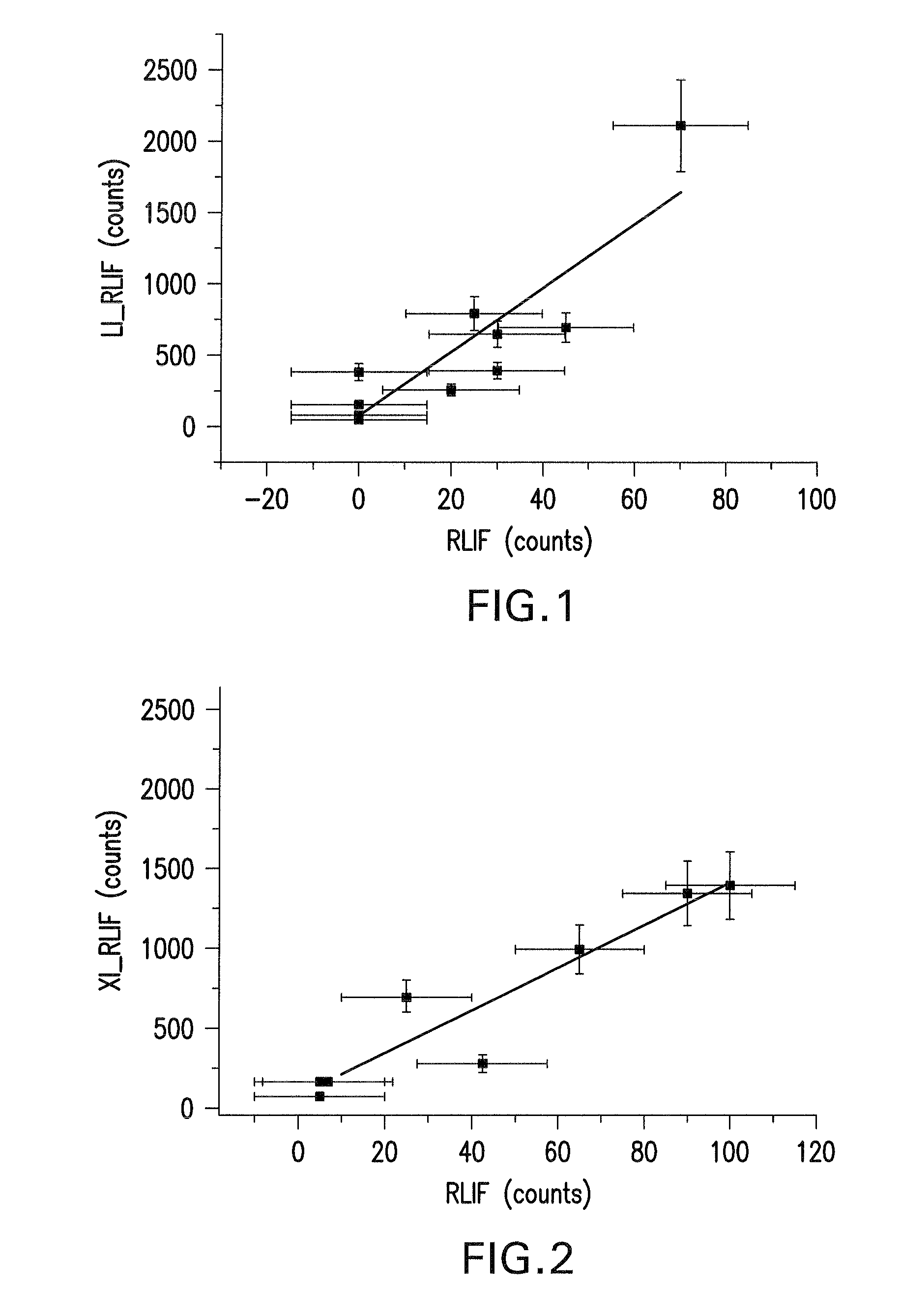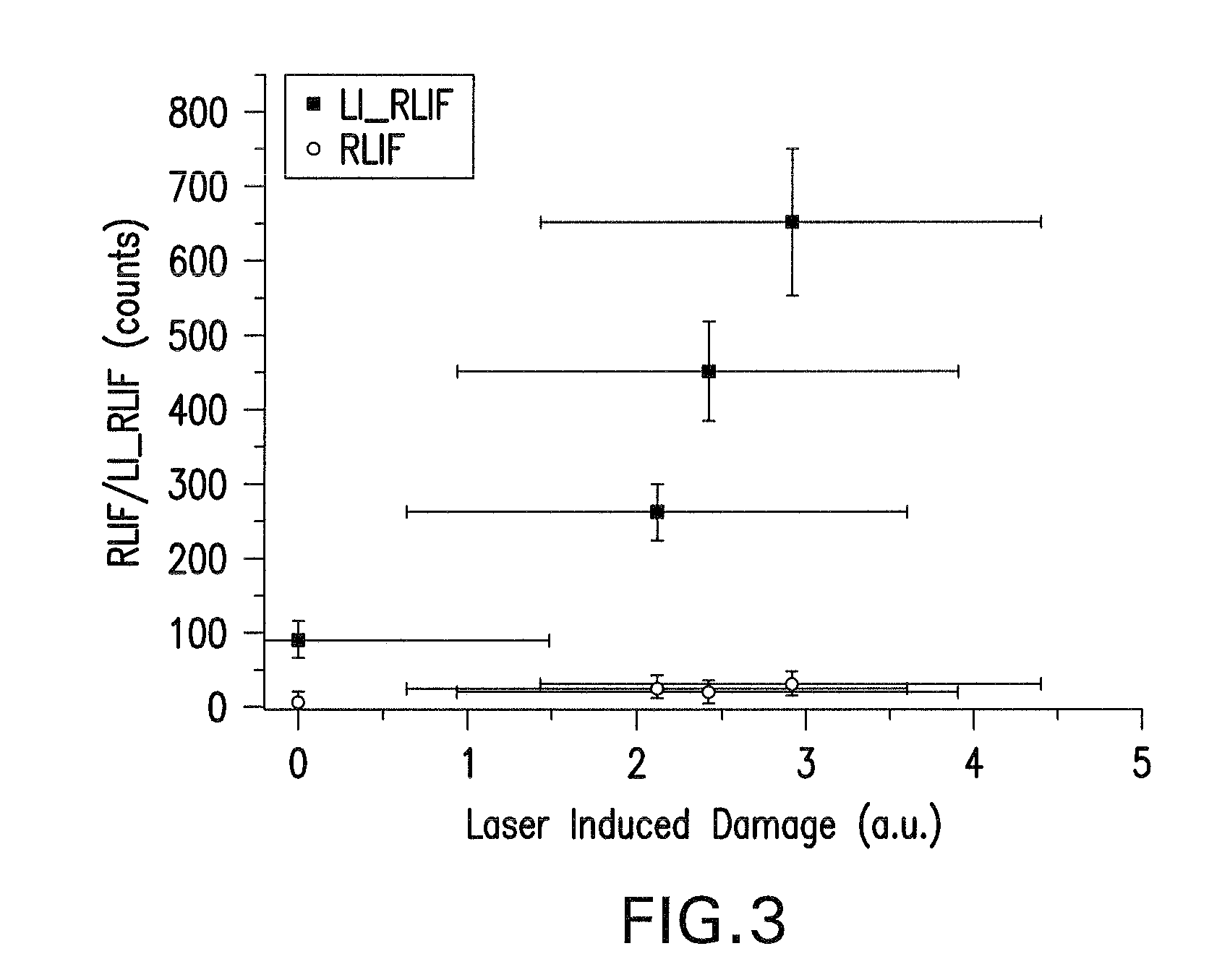Method of determining laser stabilities of optical material, crystals obtained with said method, and uses of said crystals
a technology of optical material and laser stability, which is applied in the field of determining laser stability of optical material, crystals obtained with said method, and use of said crystals, can solve the problems of increasing the sodium-stabilized f-centers by further irradiation and significant increase of measured induced fluorescence signals
- Summary
- Abstract
- Description
- Claims
- Application Information
AI Technical Summary
Benefits of technology
Problems solved by technology
Method used
Image
Examples
Embodiment Construction
[0046]Different calcium fluoride crystals described by EP 1 890 131 A2 as laser-stable or laser radiation resistant were irradiated with 25 million pulses of 50 mJ / cm2 from a pulsed laser and subsequently the laser-induced fluorescence signals were measured with a CCD camera by the same measurement methods as previously in the first measurement of induced fluorescence. The results are shown in FIG. 1.
[0047]The light induced fluorescence signal prior to the energetic irradiation is plotted in FIG. 1 against the induced fluorescence signal after the extremely energetic irradiation. As can be ascertained from FIG. 1 the five samples according to the prior art method that had hardly any induced fluorescence had an induced fluorescence of between about 100 and 400 counts. One sample, which only had about 20 counts when exposed to a conventional irradiation, had an induced fluorescence of about 260 counts. This shows that the improved method for selecting optical material according to the...
PUM
 Login to View More
Login to View More Abstract
Description
Claims
Application Information
 Login to View More
Login to View More - R&D
- Intellectual Property
- Life Sciences
- Materials
- Tech Scout
- Unparalleled Data Quality
- Higher Quality Content
- 60% Fewer Hallucinations
Browse by: Latest US Patents, China's latest patents, Technical Efficacy Thesaurus, Application Domain, Technology Topic, Popular Technical Reports.
© 2025 PatSnap. All rights reserved.Legal|Privacy policy|Modern Slavery Act Transparency Statement|Sitemap|About US| Contact US: help@patsnap.com



